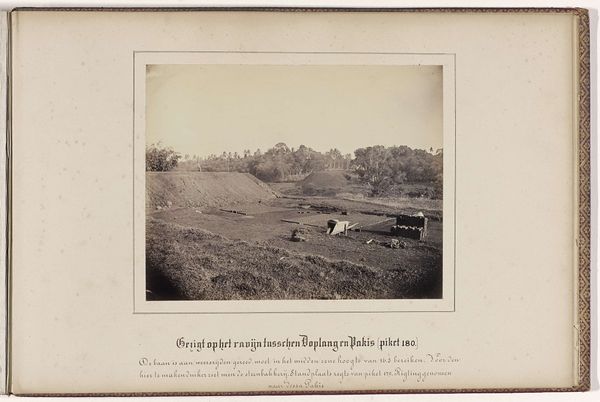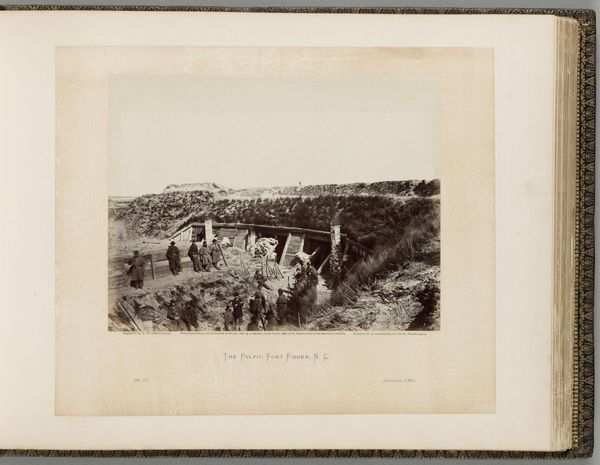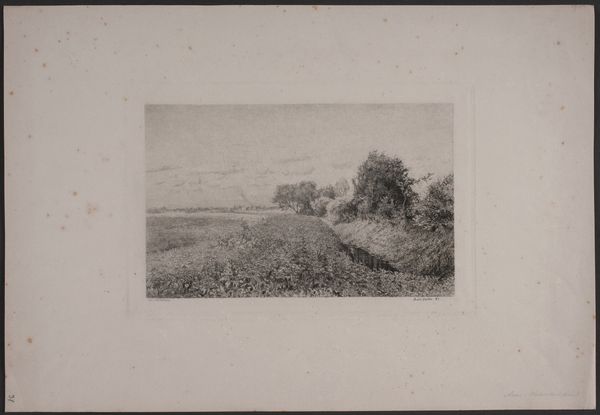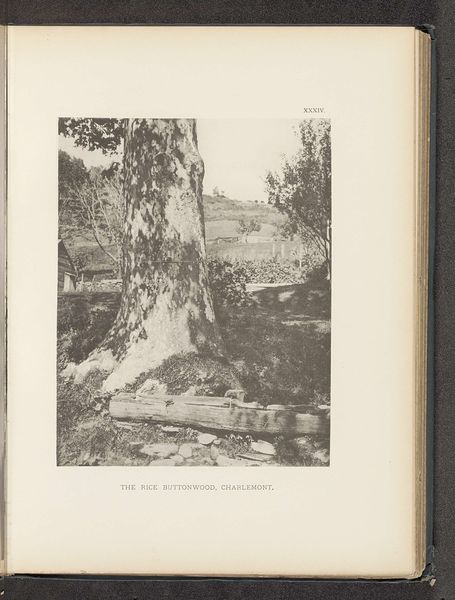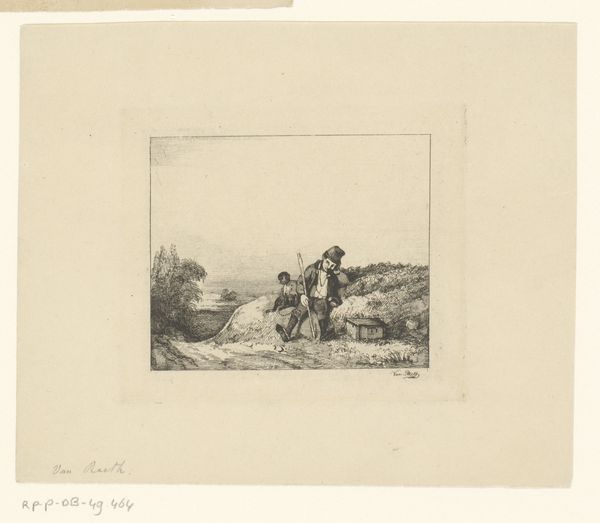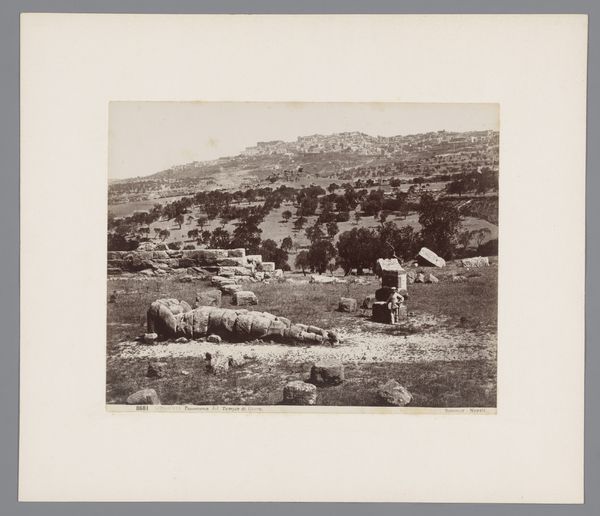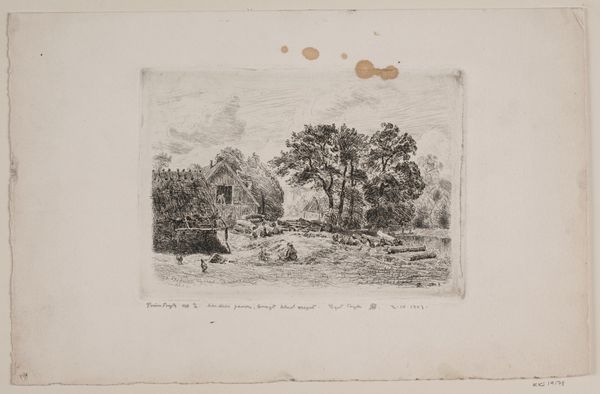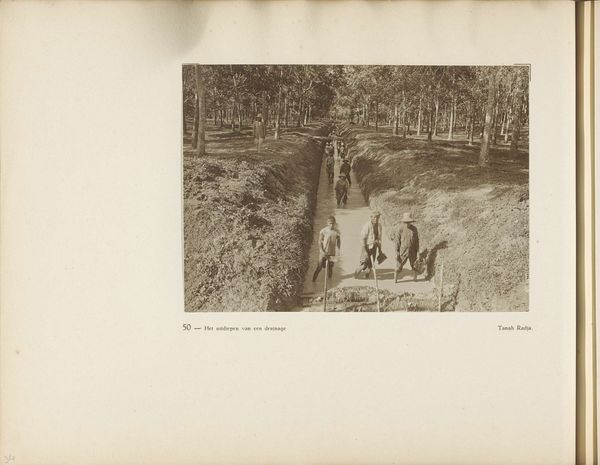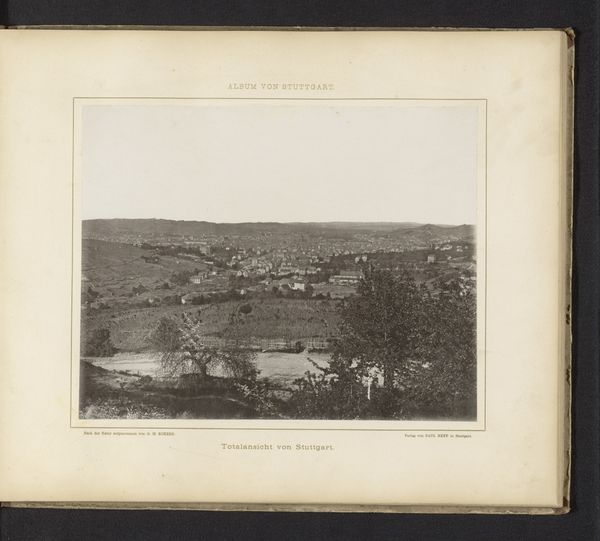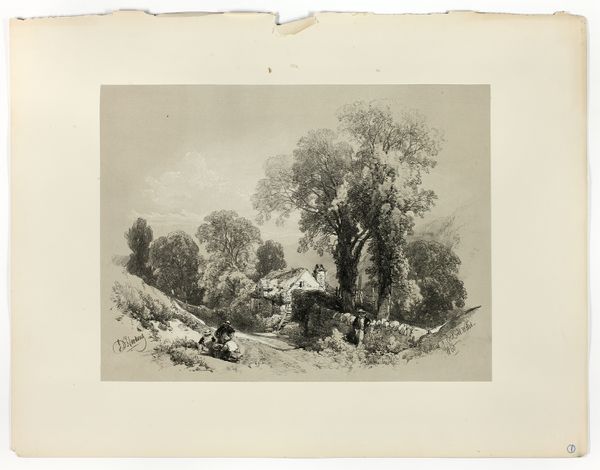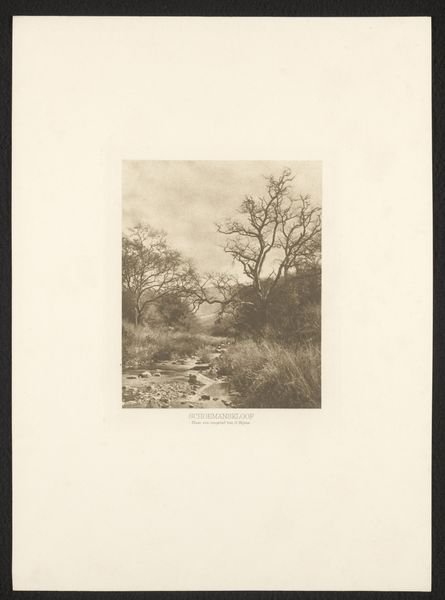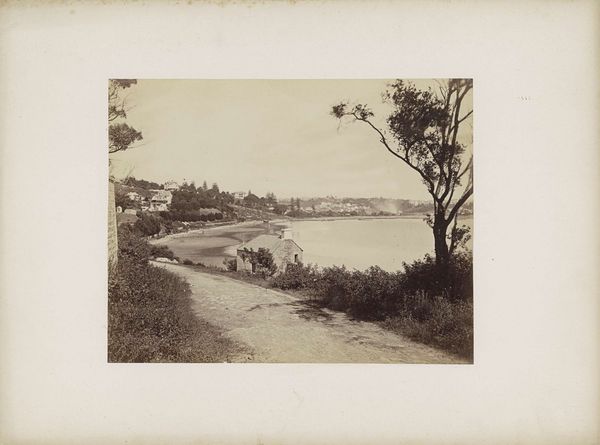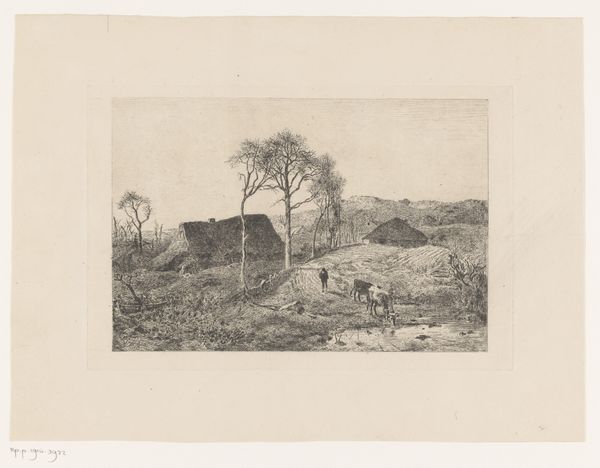
Gezigt op de halte Gogodalem met de tijdelijke woningen voor werkvolk en opzigthebbende / in het verschiet ziet men de ontgraving en ophooging tot de baan met de jalons van uitzetting. Vierde Sectie. 1868
0:00
0:00
photography, gelatin-silver-print
#
landscape
#
photography
#
gelatin-silver-print
Dimensions: height 180 mm, width 246 mm, height 305 mm, width 450 mm
Copyright: Rijks Museum: Open Domain
Curator: So, what stands out to you about this gelatin-silver print, “Gezigt op de halte Gogodalem…” by Woodbury & Page, created in 1868? Editor: The scene has a kind of quiet industry. I notice the small dwellings, and how temporary they seem, and also the obvious work of excavation in the distance. What do you see as particularly relevant about it? Curator: Well, I’m drawn to consider the photograph less as a transparent window onto a scene, and more as a document of labor and material processes. The "temporary dwellings," as you noted, what are they constructed from? Local materials hastily assembled. Look at the clothing, and tools of the workers barely visible in the scene. How do these aspects inform the wider context of colonial labor? Editor: It definitely emphasizes the conditions in which this work was completed. Were these materials and methods typically used or do they reflect something more specific? Curator: Precisely. This connects to the gelatin-silver print itself. Consider how that material and process played a crucial role in documenting and shaping colonial ventures at the time. Photography aided, through such means, the resource extraction through railway construction; how else can we understand the social ramifications of that industry if we examine it at this intersection of global trade and the indigenous people who actually performed that labor? Editor: So, you're saying we should view the photograph itself as a material product tied to colonial exploitation, in addition to what it depicts? Curator: Absolutely. Examining the materials and production of art provides a unique lens for understanding the social dynamics at play. And seeing this project this way changes my entire idea about what that image means, in that historical period and today. Editor: Definitely. It pushes you to really consider the social implications inherent to all artistic mediums.
Comments
No comments
Be the first to comment and join the conversation on the ultimate creative platform.
